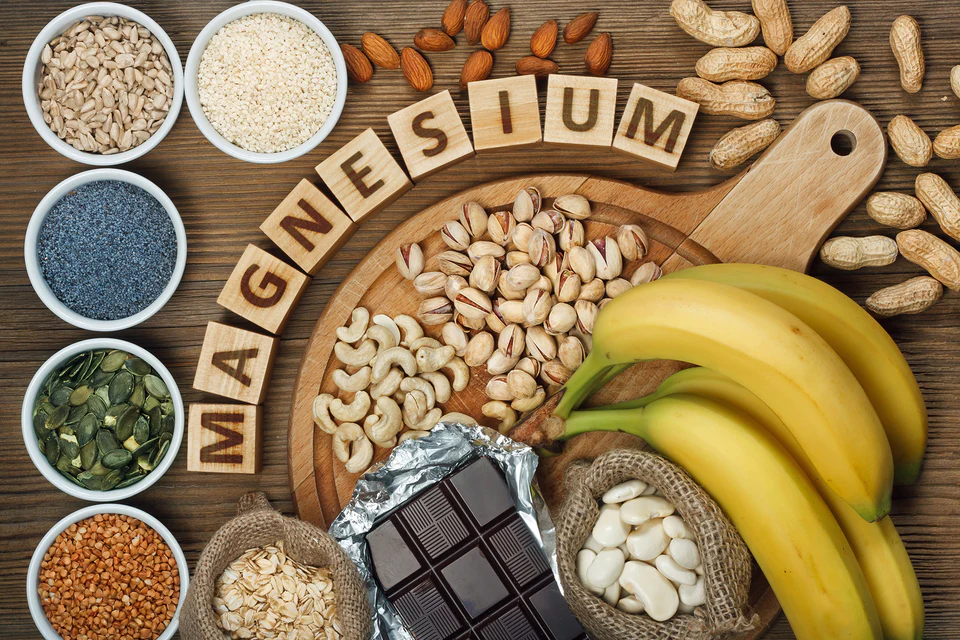Feeling Tired & Crampy? 6 Hidden Signs of a Magnesium Deficiency
That eye twitch and endless fatigue might be a cry for help. Discover the 6 hidden signs of magnesium deficiency, why it happens, and simple steps to feel like yourself again. 6 Hidden Signs Your Body is Begging for More Magnesium That subtle twitch in your eyelid. The constant fatigue that coffee just can’t shake. The restless nights when sleep feels just out of reach. You’ve probably blamed stress, a busy schedule, or just “getting older.” But what if these vague, frustrating symptoms were all pointing to one common, and surprisingly simple, solution? Magnesium is one of the body’s essential workhorse minerals, involved in over 300 biochemical processes—from creating energy and regulating your heartbeat to calming your nervous system. Yet, in our modern world of processed foods and high-stress lifestyles, magnesium deficiency has become a silent epidemic. The signs aren’t always dramatic, but they are your body’s way of sending an S.O.S. This isn’t just about eating a few more nuts; it’s about unlocking better energy, deeper sleep, and a calmer you. In this post, we’ll decode the 6 hidden signs that you might be low on magnesium, explain why it’s so common, and give you a clear action plan to replenish your levels and reclaim your vitality. Why Are We So Low on Magnesium? Before we dive into the symptoms, it’s helpful to know why this is happening. It’s likely not your fault! Several modern factors are draining our magnesium stores: The 6 Hidden Signs of Magnesium Deficiency 1. The Twitch & Cramp Conductor The Sign: Unexplained muscle twitches (especially that pesky eyelid twitch), charley horses, or general muscle cramps. The Science: Magnesium acts as a natural relaxant. It helps regulate the flow of calcium in your muscle cells, which is essential for smooth contraction and relaxation. When magnesium is low, calcium can over-activate the nerves, leading to those random twitches, spasms, and painful cramps. 2. The Energy Thief You’ve Never Heard Of The Sign: You’re constantly fighting fatigue, feeling drained even after a full night’s sleep. The Science: If you’re always running on empty, check your magnesium levels. This mineral is a key player in creating ATP (adenosine triphosphate), the primary energy molecule in your cells. Without adequate magnesium, your body’s energy production factory can’t operate efficiently, leaving you feeling perpetually tired. 3. The Silent Saboteur of Your Sleep The Sign: You struggle to fall asleep, wake up frequently throughout the night, or just never feel rested in the morning. The Science: Magnesium is essential for quality sleep. It calms the nervous system by binding to GABA receptors, a neurotransmitter that puts your brain into “rest and digest” mode. Low magnesium means a noisier, more active mind at night, making it difficult to wind down and stay asleep. 4. The Undercover Stress Amplifier The Sign: You feel unusually anxious, irritable, emotionally frazzled, and on edge. The Science: Magnesium is nature’s chill pill. It helps regulate the body’s stress-response system (the HPA axis). When you’re deficient, your body is more susceptible to the physical and emotional effects of stress, leading to heightened feelings of anxiety and irritability. It’s a two-way street: stress depletes magnesium, and low magnesium makes you more stressed. 5. The Headache & Migraine Trigger The Sign: You experience frequent tension headaches or debilitating migraines. The Science: For headache and migraine sufferers, magnesium can be a game-changer. It helps balance neurotransmitters and can prevent the constriction of blood vessels in the brain—a key trigger for migraine attacks. Research has shown that magnesium supplementation can be an effective preventive treatment. 6. The Weird One: Intense Sugar Cravings The Sign: You get powerful, almost uncontrollable cravings for chocolate, candy, or sugary carbs. The Science: This is your body’s clever, yet confusing, cry for help. Magnesium plays a vital role in insulin function and how your body uses glucose for energy. When levels are low, your body struggles to process sugar efficiently, leading to intense cravings as it seeks a quick energy fix. (And yes, this is a scientifically-backed reason for that dark chocolate craving!) Your Action Plan: How to Replenish Your Magnesium If these signs feel familiar, don’t worry—there are simple and effective ways to boost your magnesium levels. 1. Load Up on Magnesium-Rich Foods The tastiest way to get more magnesium is through your diet. Focus on incorporating these foods: 2. Consider High-Quality Supplementation Sometimes, food alone isn’t enough, especially if a deficiency is significant. 3. Try Topical Magnesium For those with sensitive stomachs, topical magnesium (like oils, sprays, or flakes for baths) can be absorbed directly through the skin. A relaxing magnesium bath before bed is a perfect way to ease muscles and promote sleep. Listen to Your Body’s Signals These “hidden” signs are your body’s intelligent way of communicating a need. That twitch, that craving, that unshakable fatigue—they aren’t just random. They are clues. By recognizing them and taking action, you can address a root cause of many common health annoyances and move toward feeling more energized, calm, and rested.


